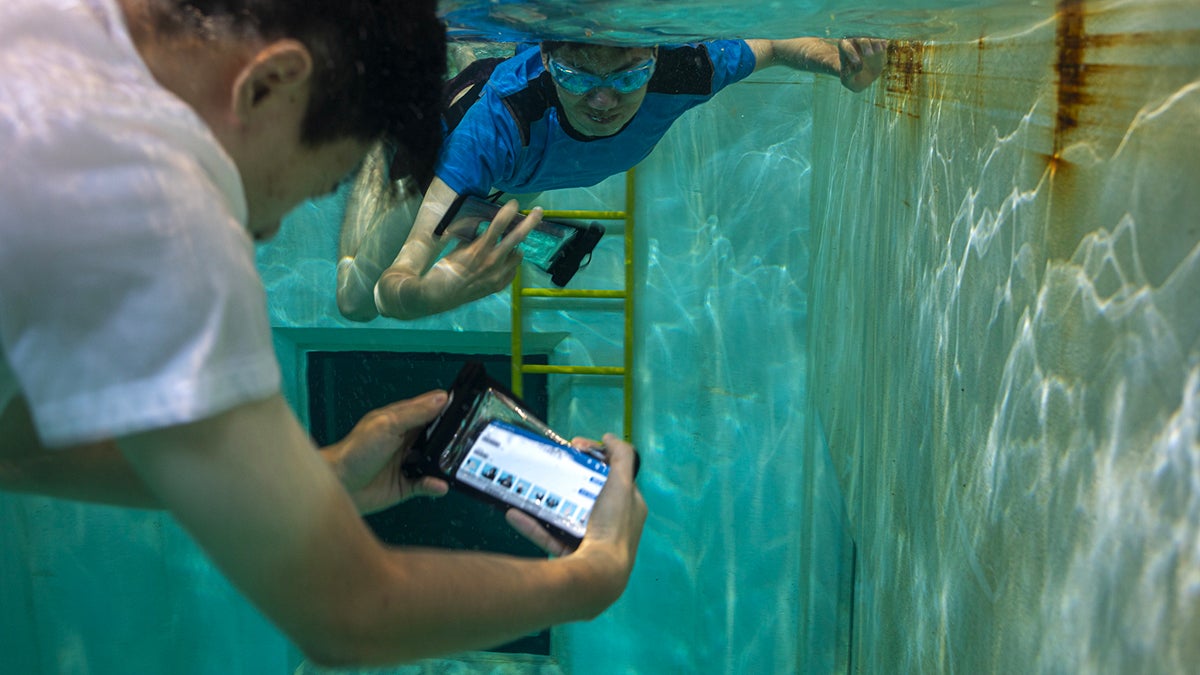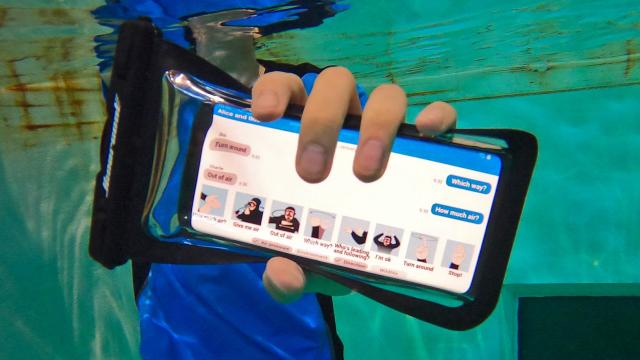There’s more than one reason to avoid dropping your phone in the water. Not only is it catastrophic for devices that aren’t properly waterproofed, but your device will also lose most of its wireless connectivity when submerged, leaving you unable to text message friends who’ve gone overboard too, unless you download and install a new app created by researchers at the University of Washington.
Although almost every new smartphone can shrug off a dunking. But while submerged, most of a smartphone’s best features become unusable, as wireless signals don’t propagate as well under water. Ranges for wifi and Bluetooth become limited to maybe a few centimeters, because water is quite effective at absorbing wireless signals with shorter wavelengths. That’s how that microwave oven in your kitchen is so good at heating moist foods.
It’s a problem that even affects the militaries of the world, many of which operate with almost unlimited budgets. If submarines want to communicate with other ships, they either need to surface to a level where they can raise an antenna above the water line or use sound-based communication systems that rely on microphones and speakers. Every smartphone coincidentally has sound-based communication built right in, and that’s the key to how AquaApp, a new app for communicating wirelessly underwater across long distances, works. Developed at the University of Washington’s Paul G. Allen School of Computer Science & Engineering, it’s a clever way to expand a phone’s abilities without requiring additional hardware.
Even professional divers have traditionally relied on hundreds of different hand signals to communicate with each other under water, as devices that can facilitate underwater messaging usually requires a military-sized budget. But the AquaApp is free, with its open-source Android code available to download from GitHub for those who know how to build and install apps. (A recently published research paper detailing the development of the app is also available here.) The only other thing users need is a waterproof phone or waterproof case.
Instead of wifi or Bluetooth, AquaApp uses acoustic signals to broadcast messages to other Android smartphones running the app, through an interface that provides quick access to 240 pre-set messages that correspond to diving hand signals. Said signals indicate everything from equipment status to nearby wildlife. But just like sound waves can be obstructed or obscured on land, under water, they can be affected by noise from boats and animals, the motion of the water itself through waves and currents, and even reflections from the surface of the water, the coastline, or the ground below.

To account for the ever-changing broadcast conditions under water, the AquaApp first sends a quick introductory signal called a preamble to another device, which then analyses the received signal with a custom algorithm that determines the best bitrate and frequencies to use for each transmission. The optimised signal specs are then sent to the other device before full back and forth messaging can begin.
The AquaApp has been tested to depths as deep as 15 meters in busy waters, and its creators have found it can achieve a data transmission rate anywhere from 100 bps to 1.8 kbps at a distance of 30 meters, which is ideal for sending and receiving messages, or up to 100 meters if the bitrate is reduced to 10-20 bps, which still allows simple S.O.S. messages to be transmitted in emergencies. In other words, you’re not going to want to try sharing photos back and forth during a dive, but the researchers also created their own networking protocol for the app, which allows up to 60 users to communicate under water in the same group chat, which means a life under the sea is no longer a sure fire way to escape your family’s chaotic group messaging.
